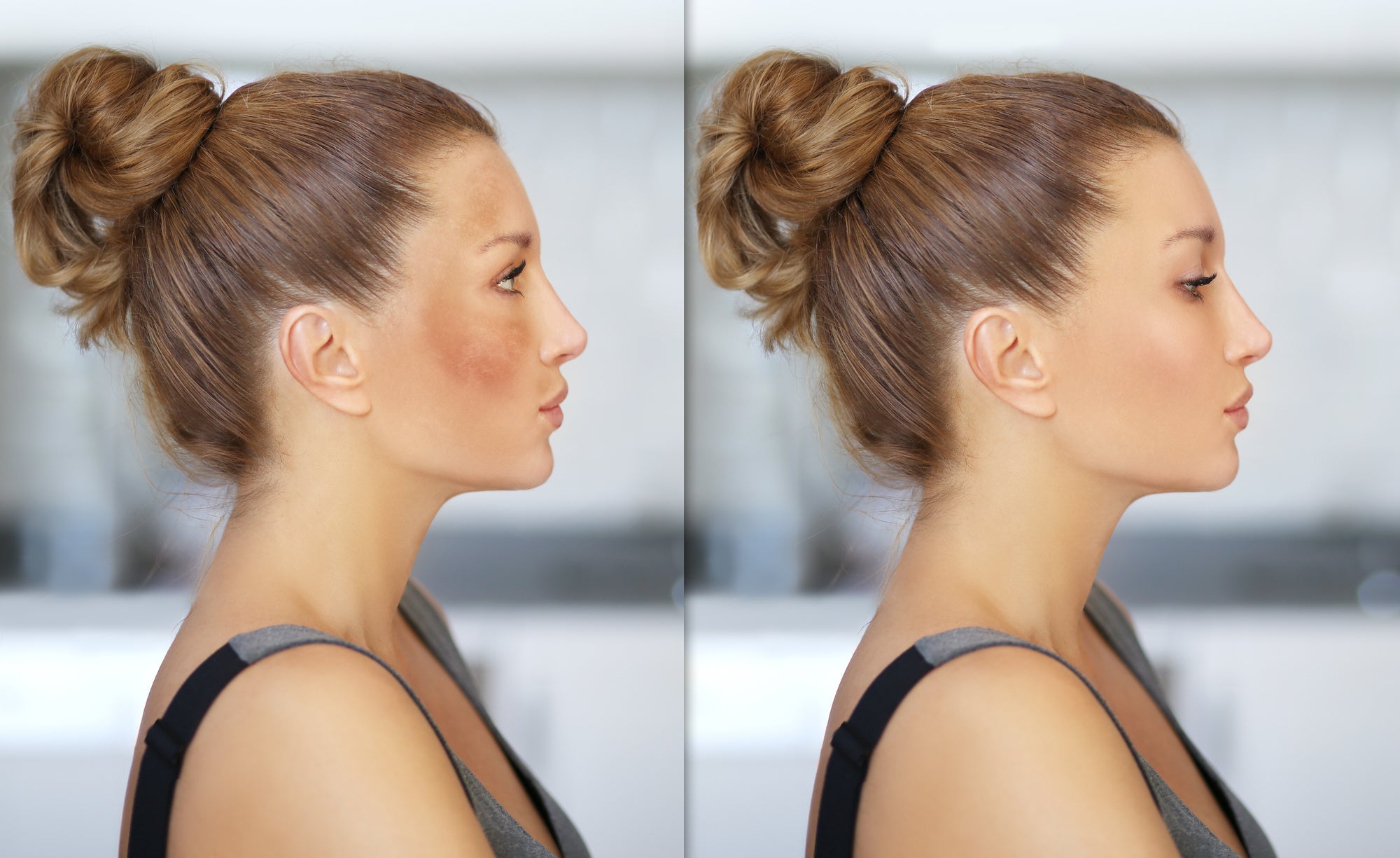
Common Cosmetic Ingredients to Avoid For a Healthier You
You might be shocked to learn how many toxins and allergens are in some of your cosmetics.
When we put products on our skin, we absorb the chemicals. Some get into our bloodstream, while others get inhaled or ingested.
It is important to become educated on the ingredients applied to your skin. The best thing you can do to help the clean product movement is to consciously choose products that are good for your skin and your body.
By supporting companies using safe ingredients, you help ensure a better future in the beauty realm. And your body will thank you too. :)
Here are some of the most common irritants and toxins found in cosmetic products today to look out for.
Fragrance
Many cosmetic and skincare products list "fragrance" on their label, without specifying what the scent is derived from.
Some fragrances can cause reproductive harm, cancer, allergic reactions, and skin sensitivities. Which is why Oxygenetix has chosen to be fragrance-free.
The FDA requires companies to list all ingredients on packaging, however under the Fair Packaging and Labeling Act (FPLA) companies do not have to disclose “trade secrets”. Therefore, companies can umbrella their complex combinations of chemical ingredients for scent under the word “fragrance”.
Some keywords to look for are “fragrance”, “parfum”, “perfume”, and “aroma”. If a company uses these words they are most likely using harmful chemicals. Additionally, if the label says “unscented”, it is not necessarily fragrance-free. Watch for words like “natural scent” and “natural fragrance” as these terms are also not regulated.

Some Common Fragrances to AVOID:
The European Commission lists the following 26 fragrance ingredients listed as allergens in Annex III of the European Union Cosmetics Directive:
- Amyl cinnamal
- Amylcinnamyl alcohol
- Anisyl alcohol
- Benzyl alcohol
- Benzyl benzoate
- Benzyl cinnamate
- Benzyl salicylate
- Cinnamyl alcohol
- Cinnamaldehyde
- Citral
- Citronellol
- Coumarin
- Eugenol
- Farnesol
- Geraniol
- Hexyl cinnamaladehyde
- Hydroxycitronellal
- Hydroxyisohexyl 3-cyclohexene carboxaldehyde (HICC), (also known as Lyral)
- Isoeugenol
- Lilial
- d-Limonene
- Linalool
- Methyl 2-octynoate
- g-Methylionone
- Oak moss extract
- Tree moss extract
Preservatives
There's no doubt, it would be a drag if our makeup got moldy and bacteria-ridden before we had a chance to use it all.
According to the FDA, "Preservatives may be used in cosmetics to prevent the growth of harmful bacteria and mold, in order to protect both the products and consumers."
However, some preservatives pose a threat to your health. They can cause immediate reactions in the form of contact allergies in people who have sensitive skin. In fact, PMC states, "After perfumes, preservatives represent the second largest group of allergens most frequently implicated in cosmetic allergy.".
The vast majority of cosmetic topicals have water and or oil as the first or second ingredient listed. Any product that contains water requires a preservative to keep it from going bad, just like our drinking water contains chlorine. The preservatives that many cosmetics contain is a petroleum derivative which occludes the skin. Continual use of products that contain toxic preservatives can lead to skin concerns such as clogged pores and irritations.
After years of repeated exposure, some preservatives are known to be related to mammary tumors and The Environmental Working Group (EWG) links many preservatives to harming male reproductive development as they can act as endocrine disruptors.
All Oxygenetix product's first ingredient is aloe vera barbadensis, a soothing antimicrobial gel that removes the need for added water or oil. Additionally, Oxygenetix airless pumps keep the products safe from early oxidation without the need of a harmful preservative.

Preservatives found in cosmetics to AVOID:
- Formaldehyde & Formaldehyde releasing agents:
- Bronopol (2-bromo-2-nitropropane-1,3-diol)
- 5-bromo-5-nitro-1,3-dioxane
- Diazolidinyl urea
- DMDM hydantoin (1,3-dimethylol-5,5-dimethylhydantoin)
- Imidazolidinyl urea
- Sodium hydroxymethylglycinate
- Quaternium-15 (Dowicil 200; N-(3-chloroallyl) hexaminium chloride)
- Parabens used as preservatives:
- Isobutylparaben
- Isopropylparaben
- Butylparaben
- Propylparaben
- Butylated Compounds (BHA, BHT)
- Methylisothiazolinone
- Methylchloroisothiazolinone
- Triclosan
- Thimerosal
Heavy Metals
Heavy metals are used in a variety of cosmetic products to provide color or help with texture.
Our bodies contain metals, such as iron, that help blood oxygenation. However, when certain metals accumulate over time, it can cause issues.
"Exposure to metals has been linked to health concerns including reproductive, immune, and nervous system toxicity," notes the Campaign for Safe Cosmetics.

Heavy Metals to AVOID:
- Lead acetate chromium (Any eye product containing any of the following could potentially contain lead):
- kohl
- kajal
- al-Kahal
- surma
- tiro
- tozali
- kwalli
- Thimerosal
- Hydrogenated cottonseed oil
- Sodium hexametaphosphate
- Talc
- Traces of Asbestos can be found in Talc
- D&C Red 6
- Chromium
Zinc Oxide, Iron Oxide, and Titanium Dioxide are often safely used in physical sunscreen formulations, however, be aware of how they are processed in manufacturing. If they are processed into nanoparticles they can be harmful to your health when inhaled or absorbed.
The Campaign for Safe Cosmetics explains, "Sunscreens with titanium dioxide and iron oxide are often excellent options but be sure these metals are non-nanoized."
Oxygenetix Foundations contain Titanium Dioxide as a physical sunscreen in its natural form. All Oxygenetix products are manufactured in an FDA regulated lab and deemed safe to use on all skin types and all ages.

PSA: The lists in this blog are not extensive but cover some of the most common irritants and toxins found in cosmetics today.
Visit the Campaign for Safe Cosmetics and EWG's Skin Deep for more information on ingredients and the movements taking place to change our industry for the better.
Oxygenetix
As the go-to post-procedure topical to heal and conceal extremely compromised skin, Oxygenetix was created to be hypoallergenic and breathable, using only the best medical grade ingredients.
Get your Oxygenetix today for a worry-free makeup application that will leave you glowing inside and out!



Laisser un commentaire
Ce site est protégé par hCaptcha, et la Politique de confidentialité et les Conditions de service de hCaptcha s’appliquent.